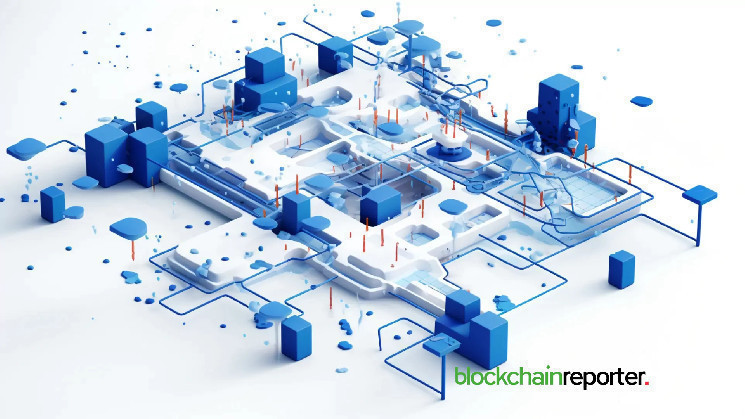
During this year’s bullish run, DePINs have swiftly secured the number five spot in the rapidly evolving technology landscape, following Memes, AI, L2s, and RWAs. DePINs are among the top innovations and are vital key factors in determining the future’s environment. DeFi managers have characterized DePINs as a formidable duo since 2024, following the rise of AI, underscoring their critical significance across diverse global industries.
The mainstream beginning of decentralized networks for physical infrastructures emerged in the previous year when leading manufacturers across the world integrated physical infrastructure with a blockchain. Blockchain protocols, enabled with cryptocurrency tokens to improve production and performance, involve decentralized physical infrastructure, which is gradually unified with the Internet of Things. The DePIN market is valued at around $2.2 trillion. Therefore, their importance to determining future infrastructure networks is significant.
Understanding DePINs
The acronym “DePINS” stands for Decentralized Physical Infrastructure Networks. DePINs are the revolutionary application of blockchain technology to physical infrastructure and systems. They leverage blockchain and other advanced technologies to set up decentralized networks for physical infrastructure such as energy grids, supply chains, telecommunications, transportation systems, and so on.
How DePINs Work?
DePINs work by distributing control over a network through blockchain, sometimes in combination with the Internet of Things. Blockchain acts as an encrypted ledger and records all transactions and data exchanges on the network. It ensures trust and transparency by creating an irreversible record of all actions taken.
At the same time, the Internet of Things is based on interconnected devices that constantly collect data and exchange it in real-time. In DePIN, these devices are connected to and communicate with the blockchain database. They allow for autonomous actions within physical networks. DePIN is a blockchain-powered system for distributing ‘PIN’ authority to the network, which can be implemented in various fields, including energy, supply, telecommunications, data storage, transportation, and real estate.
For example, in energy, a decentralized network allows peers to trade energy, while blockchain records the transaction in a transparent manner. Smart contracts facilitate automated, efficient and supportive renewable energy use. Incentives for users, including cryptocurrencies, encourage their growth and participation.
Why DePIN Matters?
Security and Efficiency:
DePIN plays a critical in ensuring security and efficiency of the physical infrastructure. Through the elimination of a central control point and failure point, it minimizes the threat of tampering and manipulation. Additionally, the use of cryptographic techniques to secure transactions and data exchange in a distributed ledger ensures that the record cannot be tempered with and is secure from unauthorized access. This security measure ensures critical infrastructure is protected and can also build trust between all parties involved.
Transparency and Traceability:
In the field of supply chain, DePIN facilitates transparency and traceability unlike before. For companies, the technology ensures that each step of production and distribution process is monitored in a block chain hence fostering a secure record of provenance. As a reuslt, stakeholders can use the information in a distributed ledger to verify whether products are genuine or not, hence reducing the risks of fraud, counterfeiting or even criminal activities. To the consumers, the technology promotes credibility and awareness prompting them to make better purchase choices and support ethical practice.
Democratization of resources:
DePIN could be used to democratize the resources such as energy and transportation to the public. Traditionally, the resources have been under single entities who have used their power to maximize profits. Consumers have had no choice but to use the services offered. However, with DePIN, people and organizations are able to produce, distribute and utilize resources directly. For instance, consumers could generate electricity in their homes and direct what they don’t use to their neighbors.
Economic Empowerment:
DePIN promotes economic growth and stability through peer-to-peer transactions. Underutilized communities and people are able to participate and earn token and transactions use the tokens for their transaction expenses. It promotes innovations since it creates opportunities for people to utilize their resource to generate more money and add value in the community.
Examples of DePIN Projects
Several DePIN projects illustrate the integration and application of the technology in numerous industries. For instance, Filecoin ($FIL) is a DePIN project offering decentralized storage opportunities, prompted by the realization that people have unused storage spaces. These projects are made possible through blockchain technologies.
Render is another example supporting decentralized graphics processing units, connecting node operators with artists in need of 3D rendering. They also create a platform for artists and developers to create services and applications by entering into an ecosystem.
The Graph is also another DePIN project and a decentralized protocol for indexing and querying data on a blockchain, which developers use to maintain a great user interface for developing applications.
Challenges and Future Outlook
While DePINs hold promise, several challenges remain, from regulatory concerns to technical limitations and interoperability. Indeed, DePINs adoption may be limited by the need to comply with regulatory requirements, particularly where uncertainty applies. Similarly, the technical aspects are likely to constrain the use of DePINs in complex systems.
However, DePINs present potential, and given the trajectory of technology, they will overcome these obstacles. By paving the way for decentralized physical infrastructure, DePINs are undoubtedly creating new paradigms. They allow people and communities to have an active role in their physical resources and infrastructure. DePINs are a revolution in the making.
Conclusion
In conclusion, DePINs are revolutionary systems that are positioned to disrupt many industries. Combining blockchain technology and IoT, DePINs enable decentralized management and optimization of physical infrastructure, making them more secure, more efficient, more transparent and democratized. Although challenges remain, the future of DePINs is promising. There are remarkable opportunities for innovation in various industries. The future of decentralized infrastructure is full of DePINs.
